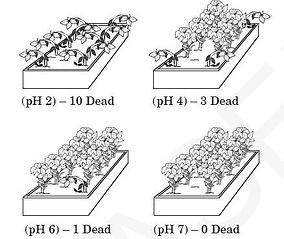
Scientific Method SC.912.N.1.1
Student needs to know......
-
This benchmark will not be assessed alone, rather, items will include content from one of the other benchmarks and you will be asked to evaluate scenarios using evidence of scientific thinking or problem solving
-
Test Items may require interpretation of data from graphs, charts and/or tables. You may also be asked to evaluate the merits of scientific explanations produced by others or to assess the reliability of sources of information according to scientific stadard
-
In addition, you may also be asked to compare and/or contrast the structure of various microscopes including compound, dissecting, scanning electron and transmission electron.
Example One
Carmen conducted an experiment to determine if listening to different types of music would affect a person’s pulse. Her hypothesis was that pulse rate would change with different types of music. Each person listened to seven different selections of music for 30 seconds each. Each person’s pulse was taken before the music and then after each 30-second interval of music. The pulses were taken again after the music selections were completed. Based on her experiment, Carmen concluded that a person’s pulse rate changed when the person listened to different types of music.
Which component is missing from Carmen’s experiment?
A. a question
B. a hypothesis
C. a control group
D. a description of the experiment
Example Two
A scientist performs an experiment to see if acids have an effect on the health of a particular type of plant. Three sets of plants were treated with acidic solutions of known pH while the control set was treated with a solution of neutral pH 7.
Which is the best conclusion for this experiment?
A. Acid has no effect on the health of this type of plant.
B. High acidity is helpful to this type of plant.
C. Low acidity is harmful to this type of plant.
D. High acidity is harmful to this type of plant.





